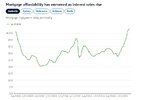- Joined
- 3 July 2009
- Posts
- 27,646
- Reactions
- 24,545
Same end result, if you are losing money from low prices, you go broke.Where that becomes a problem is when it results in a loss of customers.

if you are losing customers, which means you are losing money, you go broke.
That's why such a high percentage of small businesses go broke in the first year, a business isn't always a license to print money.
When the minimum wage is lifted 5.75% all the input costs go up, because all your suppliers costs go up. The electricity suppliers costs, the water authorities costs, the trucking companies costs, the warehouse costs.
Every business that employs someone and supplies a service to another business passes that cost on.
I've known a few mates over the years that started businesses, none made a huge amount of money, the most successful has five child care businesses and doing o.k. but a lot of administrative headaches.
The good thing is, business walks in through the front door and it is always renewing.












